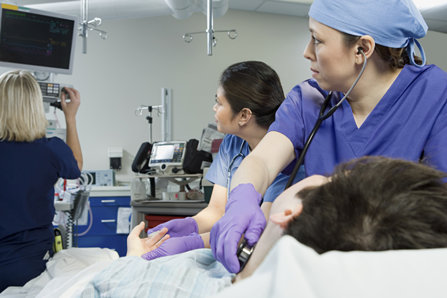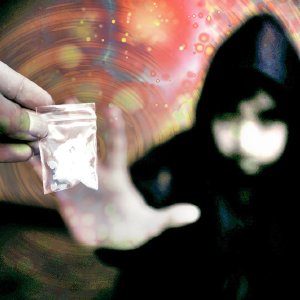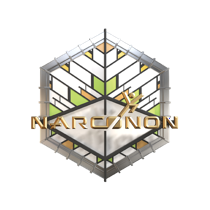New Data Shows Use of Psychoactive Prescription Drugs Among Young People Creates a Risk for Addiction

A recent study published in Family Medicine and Community Health reports that one out of every three young people (not just minors, but young adults too) misuse the psychoactive prescription drugs they are prescribed. Not only does this indicate the mind-altering and addictive nature of such drugs, but it also shows that young people ages 12 to 25 are at particularly high risk for addiction when they take such drugs.
The adverse physiological and psychological side effects of psychoactive prescription drugs have been known for some time. But the recent study is one of the first of its kind that connects the recreational misuse of such drugs to the risk for addiction. As the study points out, “Possible consequences of such misuse, especially when co-occurring with multiple psychoactive prescription medications or other non-prescription substances include altered brain development, substance/medication-induced mental disorders, a potential for lifelong addiction, a ‘downward drift’ (i.e., a descending social migration and/or loss of social status) and various substance-related diseases.”
If young adults are increasingly misusing their prescribed drugs, so much so that they are becoming addicted to such medications, it’s time to rethink the sensibility of prescribing such potent, mind-altering substances to young people.
What are Psychoactive Prescription Drugs?
A simple definition of psychoactive prescription drugs should be put forward here. A psychoactive prescription drug (also called a psychopharmaceutical drug) is any pharmaceutical drug designed to change the nervous system’s function. The result of taking a psychoactive prescription drug is alterations in perception, mood, consciousness, cognition, and behavior. Most prescription psychoactive drugs are intended for medical use, but they are often taken recreationally, given their mind-altering effect. Examples of common psychoactive prescription drugs include:
- Xanax (alprazolam)
- Dexedrine (dextroamphetamine)
- Prozac
- Ativan (lorazepam)
- Desyrel
- Klonopin (clonazepam)
- Cymbalta
- Thorazine (chlorpromazine)
- Valium (diazepam)
Unlike medications that are prescribed to treat a medical issue (like medication for a heart condition), prescription psychoactive drugs are prescribed to address mental, psychological, emotional, or behavioral problems. Because behavioral issues have the potential to be extremely complex, and because prescription psychoactive drugs are not designed to treat a specific biological phenomenon, it’s easy to miss-dose, improperly prescribe, self-medicate, experiment, or otherwise use or supply prescription psychoactive drugs in a harmful way.
Young People and Psychoactive Prescription Drugs—A Story of Misuse
An example of the dangerous nature of prescription psychoactive drugs and their use came to light very recently, in the study results touched on earlier.

“With increasing popularity of performance-enhancing stimulants in schools, it is imperative for policymakers, school administrators, health care professionals and parents to become more aware of this emerging danger and take appropriate steps...”
According to lead study author and researcher Israel Agaku, a lecturer in oral health policy and epidemiology at the Harvard School of Dental Medicine in Boston, “Misuse of prescription substances is alarmingly high among U.S. youth and young adults. This study draws attention to the silent epidemic of prescription stimulant use among youth. With the increasing popularity of performance-enhancing stimulants in schools, it is imperative for policymakers, school administrators, health care professionals and parents to become more aware of this emerging danger and take appropriate steps, similar to what has been done for the opioid epidemic.”
The study found that about 35% of young people ages 12 to 25 have taken a prescription psychoactive drug in the past year (that they were prescribed). Of those who take such drugs, about 31% admit to misusing them. And surprisingly enough, while opioid medications were the most commonly prescribed drug among the study group, the study showed that young people were more likely to misuse pharmaceutical stimulants and tranquilizers.
The researchers also found that one in ten of the study participants took at least two prescribed psychoactive drugs, and about 58% of those individuals abused at least one of the drugs.
The likelihood of a young person taking prescription psychoactive drugs increased with age. Among teens, only one in four took a prescribed psychoactive drug. Among young adults, 41% took a prescribed psychoactive drug.
For the teens in the study group, about 20% admitted to misusing their prescribed psychoactive drug. For the young adults in the study group (18 to 25 year-olds), 34% reported misusing their prescribed medication. Furthermore, 12% of the young adults reported serious psychological problems tied to the misuse of their psychoactive drugs.
When considering the study’s findings, Linda Richter, vice president of prevention research and analysis at the Partnership to End Addiction, had this to say, “Parents should be conscious of the attitudes and behaviors they model for their children when it comes to prescription drugs, and convey that medications are not to be taken lightly, or that a pill is necessary to relieve everyday stress or anxiety. Parents should talk with their kids about the risks of prescription drug misuse and explain that, just because these drugs are prescribed by a doctor, they are not safe unless taken as prescribed by the person for whom it was prescribed. Doctors and other prescribers should take these medications seriously, prescribe them sparingly to young people, and do so in the context of educating patients and their families about the risks.”
Drug Addiction Among Young Adults

Addiction can happen at any age, but when a person starts using drugs at a young age, they bring onto themselves a long list of risks and dangers. For example, a study published in Pediatrics highlighted the concerning surge in stimulant overdoses among young people. This phenomenon is likely connected to the fact that young people are increasingly misusing such drugs.
According to another study, fatal overdoses among young people have been increasing for the past two decades, with nonfatal overdoses often serving as a predictor for deadly overdoses. While addiction is dangerous and destructive no matter what age one is when addicted, some would say that drug addiction poses even more risk to young people.
That is all the more reason to ensure that young people get the help they need when they become addicted to drugs.
The Importance of Getting Help
Drug addiction robs tens of thousands of Americans of their lives each year. According to research findings, the age group 25 to 34 suffers the most drug overdoses of any age group. And thousands of people under the age of 25 die from drugs each year too.
Young people sometimes think it is OK to experiment with psychoactive prescription drugs because such drugs are legal, pharmaceutical medicines intended to help people. But these medications can have devastating effects, particularly when they are misused. When someone becomes hooked on such drugs, they must get help at a drug and alcohol treatment center as soon as possible.
Sources:
- https://fmch.bmj.com/content/9/1/e000374
- https://www.usnews.com/news/health-news/articles/2021-02-03/1-in-3-young-americans-prescribed-a-psychiatric-drug-misuses-them-study
- https://pediatrics.aappublications.org/content/147/1/e2020031526
- https://www.ncbi.nlm.nih.gov/pmc/articles/PMC4878116/
- https://www.kff.org/other/state-indicator/opioid-overdose-deaths-by-age-group/


